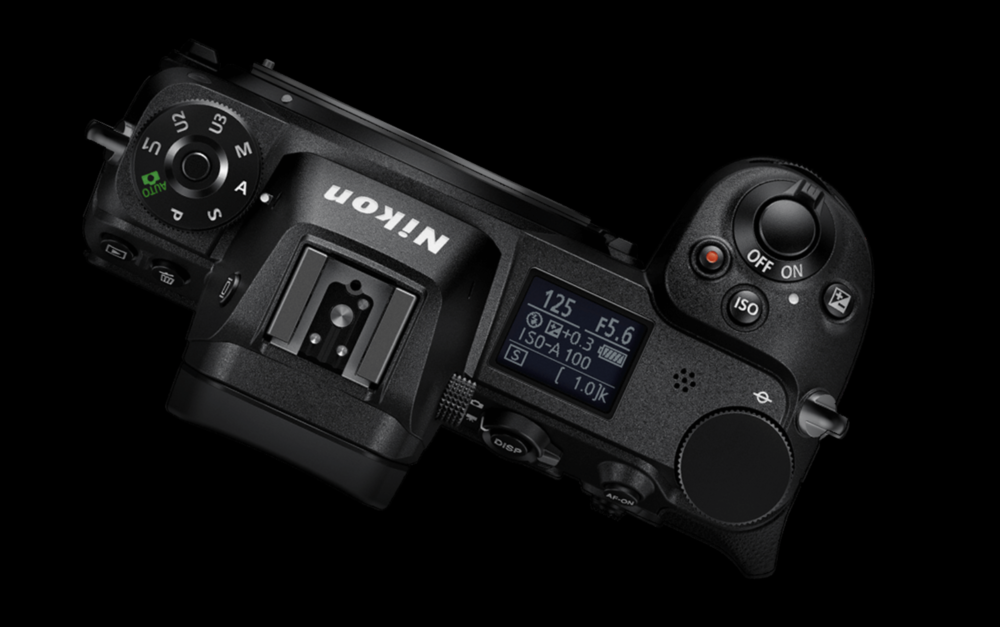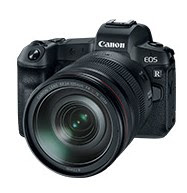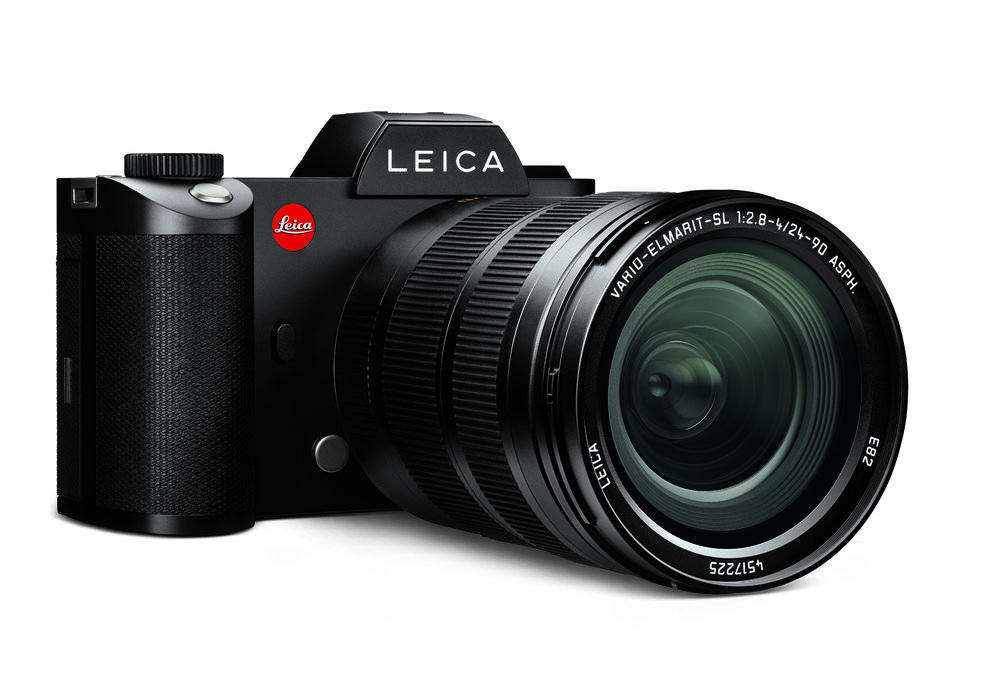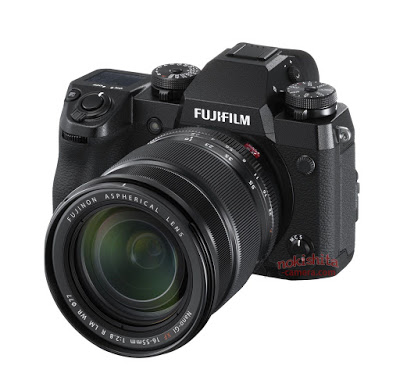

We live in interesting times for sure. After four years of rather leisurely progress in full-frame non-SLR full-frame camera’s, the pace just got pretty frantic. Sony, the company which has almost single-handedly proved that mirrorless cameras can rival the once-mighty SLR, has a commendable head start. But can Sony keep the crown?
Only a fortnight ago the long-awaited entry of Nikon became fact. More surprisingly, though, Canon’s new cameras will be announced today instead of “sometime next year” as everyone expected.
Zed well bedded
By all accounts, the new Nikon Zeds compete on equal footing with Sony. Our colleague William Fagan has had a play at his local Nikon dealer in Dublin and came away impressed — to the point of considering jumping on the bandwagon. He reports the Nikons are very well built (the word Leica was mentioned in passing) and handle well. They also played impressively with some of his Nikon legacy lenses. About the only major criticism of these two new cameras is that they have only one SD card slot. Sony now has two, as you know. But I also understand that Canon will also make do with one slot.
If we exclude Leica’s SL, which is a rather niche product, bearing in mind the size and cost of the system lenses, the market now has to support three major manufacturers when only two months ago Sony owned the full-frame mirrorless world almost outright.
Panasonic
And it is about to get worse (from a manufacturers’ point of view but probably better for the consumer) because Panasonic is said to be ready to announce a full-frame camera at Photokina. In many ways, Panasonic, with its current concentration on m4/3, is in an ideal position to benefit from a move to the larger sensor. No news from Olympus but I imagine they won’t let this one pass unchallenged
There have also been rumours that the new Panasonic will adopt the Leica L mount. This has been vigorously denied, but the L would seem to be the ideal option for Panasonic. It would also benefit Leica in the same way that the cooperation with Panasonic on compact cameras has been of value to Wetzlar. And we all know that Panasonic helps Leica with the electronics of its home-brewed cameras such as the CL and the SL. I wouldn’t mind betting that there is even a bit of Panasonic wizardry in the M10 (meet me at the stake in the town square at 9 am tomorrow).
And Leica?

There have been persistent rumours of a smaller full-frame mirrorless system camera from Leica — possibly to be called the C-M. And I suppose one possibility is that it could be a joint effort with Panasonic.
It’s pretty obvious that the main thing holding back sales of the over-engineered SL is not the price or any lack of ability, but the size and weight of the system. Many photographers who could well afford the SL, and who admire it greatly, do not buy it because of size. On the other hand, there is some conjecture that the C-M could use the M-mount and be designed specifically to work with manual lenses.
Yet as it stands at the moment, we will soon have at least four different mirrorless mounts — Sony, Leica, Nikon and Canon. Does the world need a fifth?

After press day at Photokina, we will have a much clearer idea of which way the market is going. But whatever happens, good ship Sony will no longer be pressing ahead in such calm waters. There’s a touch of Biscay bay on the horizon, if not a generous dose of the Tierra del Fuegos. Can all these full-frame cameras survive the voyage?
Crop sensor crop
There’s another thing to consider — the effect all this accelerating full-frame largesse will have on smaller formats. The full-frame mirrorless bodies are relatively compact, in some cases smaller than the professional APS-C and m4/3 bodies.
Apart from the disadvantage of larger lenses, full-frame cameras are now serious competition for the likes of Olympus, Panasonic and Fuji. Sony, in particular, has shown aggressive pricing to the point where the remarkably good a7III is little more expensive than several smaller-sensor pro cameras. This squeeze will continue and the price will no longer be an overriding consideration in the choice of system.
What do you think about all this? Are the smaller formats about to be crushed by the charge of the full-frame brigade? And can all these manufacturers make a profit?
____________

Canon and Nikon have too much entrenched branding for Panasonic to compete with them head on. But they might find a niche offering the best full frame video. The GH5 with a full frame sensor and good video AF would be a dream come true for many.
I’m keeping an eye for the best camera to adapt my M lenses onto. Something that can also fill in the gaps of Leica like weather sealing and video…
Now that both major DSLR brands have dropped their opening salvos into the mirrorless Full Frame battle , two things strike me:
A) Neither can compete with the latest A7 on tech ability/features. Both feel like attempts to prevent customer leakage to Sony rather than actual accrual of customers. And thats fine, it may work for those with existing glass collections.
B) it actually leaves the door open for the rumoured Panasonic FF to be more of a direct competitor to the A7iii. Panasonic already have class leading video so I doubt we’ll have to put up with cropped 4k. It already has state of the art Ibis technology. It has excellent menu and ergonomic history. It has a partnership with Leica. And I’m looking at my G9 body and pondering on whether it’s already big enough to handle a larger sensor and mount.
What Panasonic don’t have is a suitable lens lineup. Yet. But Nikon have started with just 3 native lenses.
A FF G9 with Ibis and three smallish primes would be very very tempting indeed.
Exciting times ahead, however this plays out.
FF mirrorless camera ‘sales and marketing’ could become ‘dog eat dog’ because supply could inevitably exceed demand … which could be good news for buyers if products become ‘loss leaders’ as manufacturers discount more and more to try and maintain market share. Too many manufacturers chasing too few customers could lead to abandonment of DSLRs manufacture – noisy mirror finders becoming ‘old hat’ as more photographers accept EVFs as being more than just ‘adequate’ composition tools. Micro 4/3 cameras could lose market share as more photographers realise the benefits of FF mirrorless and the wealth of adaptable legacy lenses. The old adage, ‘economics is the study of scarcity’ comes to mind .. but it’s not the products which are scarce … it’s the potential buyers. However, as mirrorless cameras flood the market, those that do succeed will be those with ‘scarce’ and thus more sought after attributes e.g. Canon already has three adapters – two of which are ‘scarce’ compared to rivals’ offerings and thus potentially more sought after by relatively scarce buyers … who might otherwise be attracted to Nikon , or Sony, or maybe Leica. Nikon will likely announce similar adapters but Canon already have the lead. And where does Ricoh Pentax fit into the marketplace … if at all? And is Olympus prepared to tackle FF mirrorless in the same way that Panasonic is rumoured to? There will likely be casualties as the FF mirrorless revolution gains momentum and the buyer dearth leaves products on shelves. Shareholders do not take prisoners … they uproot and place their bets elsewhere … leaving manufacturers to go bust or diversify.
Dunk, I agree with most of what you say. The camera industry has a lot to do to make itself relevant in a rapidly declining market for its products. Innovation is one key to survival, but the most important thing will be to keep things simple and workable. As for adapters, the Nikon FTZ adapter works on F mount lenses produced between 1959 and 2018, a 59 year period and it will also work with F mount lenses from other manufacturers, albeit without the luxury of autofocus unless the lens has AFS features. I know that you love matching different brands of lenses etc, but I would not want to match, say Leica lenses (of which I have a very large number) with a Nikon Z body. They are designed for completely different purposes. After extensive experience over the years I firmly believe that most camera systems work best with their native lenses. The FTZ adapter is, however, the best adapter that I have seen to date. This is probably because it is aimed specifically at Nikon’s long standing F lens mount.
My prediction is that 10 years from now there will be far fewer camera manufacturers ( the past 35 years have seen a huge shake out already) and far fewer cameras and what cameras still exist will be far more expensive than today. For camera manufacturers the game is now about survival and relevance. This process started on the first day that those manufacturers introduced digital cameras.
William
I saw the Queen Mum at Cheltenham one time, a tiny little figure in blue who arrived on a golf cart. She loved and knew her horses as does her daughter. This is something that Irishmen all around the world really admire as none of us come from more than one field away from a horse.
Moving on to cameras, I was a Nikon user for about 30 years before starting off with Leicas. I still have a D800E with some older lenses which I intend to use to copy a large number of slides for my myself and for a friend who shot some great slides in Yemen about 40 years ago. Just as I got my D800E set up with wireless flash and and slide adapters and rings on a 60mm Micro Nikkor, Nikon introduced the Z7. I went along to my local dealer last Friday to try out the FTZ adapter with my 60 mm lens and a 1960s 50mm f 1.4 Nikkor as well as a Zeiss 25mm in Nikon mount. The 60mm is AF-D and will only give manual focus, but it worked splendidly once I understood how to get the point of maximum focus via focus peaking. The Nikon demonstrator was so taken with my two manual focus lenses that he took photos of them to send to Nikon HQ. These also gave focus peaking which surprised the demonstrator.
Lenses have to be AFS to give AF via the adapter and I have only 2 AFS lenses left after I sold a lot of them some years ago. The 24-70mm Z zoom is nice and compact, particularly compared with the Nikkor 24-70mm f 2.8 AFS G zoom which I sold some years ago because of its size; the image quality was excellent, but the thing was way too big , particularly on the D800E. The 35mm f1.8 lens is big by comparison to a Leica 35mm M Summicron, but it is very light.
Moving on to the camera, it is compact and beautifully built, very similar to Leica standards. Readers here will know that I am something of a ‘digi-phobe’ and that I dislike terms like ‘mirrorless’, ‘full frame’ and ‘file’. I only tested the camera for basic picture taking and handling and it came through with flying colours, feeling very natural in the hand. The one card slot thing is typical ‘digi-forum’ nonsense. My M10 has only one card slot and I have to take off the bottom plate to replace it and it does not cause me any angst. I wear glasses when taking photographs and I had no problem with the EVF and it has a lovely big cushion thing for relief when I put my eye up to the viewfinder.
My D800E has a built in flash which will trigger an SB 700 when I am copying slides. Apart from that there are no apparent downsides to the Z7, assuming that the slide adapter will also work on the camera with 60mm lens. I would, however, use a Z7 much more extensively than the D800 E as it is a much smaller and nicer camera to carry around. One Z lens (probably the zoom) would be essential along with the FTZ adapter. All existing Nikon flashguns will work on the Z. Decision time beckons.
The Z series represents the future and even ‘digi-phobes’ like me can recognise change when it is coming. Whatever I decide, I will, of course, be keeping my Nikon F and FM3A cameras, which represent the first and last fully manual Nikon film SLRs. That is a typical collector thing to do.
William
Thanks for the further information, William. If you do take the plunge and buy a Nikon we can rely on you to write an article.
From what I have read or viewed the Zed looks like a very solid unit, they say weather sealing is as good as on my D850, and if more companies enter the FX MARKET the consumer should benefit! I don’t worry about the death of DSLR until mirrorless comes out with product that I will see on the sidelines at Sporting Events or back of motorcycles at the Tour de France, those are the cream of the crop the Single D (3,4,5) or Canon 1dx series. They just are the complete package, speed durability, thousands of shots, etc….Nikon honcho says Zed will have d5 comparable at some point, got to wait to see, as for one card I use my 850 w XQD don’t put an SD, have not had any hiccups yet only using one. The big boys D camera are the one they make most profit.
The SD card thing isn’t a big issue for me. As William says, the M has only one slot. But I do have a couple of cameras with dual slots and I have never used the second slot.
The flipping mirror is archaic. It arrived around 1936, when Zeiss’ Contax SLR was designed – though that didn’t appear as a fully functional item to buy till 1949.
The quiet-shutter Leica rangefinder cameras were so silent because they didn’t have the noisy flapping mirror of the SLRs (..think Pentax Spotmatic, Nikon F, Canon F-1, etcetera).
In those days, of course, people took one shot. So the noise of the flipping mirror was gone and forgotten an instant after. But when news photographers’ pro motor drives hit press conferences and all but drowned out the speakers, that’s when we all knew there had to be a better way.
Panasonic’s tiny GF1 showed what could be done without a mirror, and Sony’s full-frame A7 and A9 made “full-frame mirrorless” a reality.
SLRs will die a rapid death, and the clatter of flipping mirrors will seem, in a couple of years, like the ancient clatter of horses’ hooves in old street scenes. Gone, like the Stanley Steamer. Gone, like Ellisdons’ Seebackroscope. Gone, like black-&-white 3D movies and scratch’n’sniff Smellovision. Gone, like the old Queen Mum.
Good thing, too.
David, I can’t disagree on this. Except I did have a soft spot for the Queen Mum!
Ah! I wasn’t implying – at least, not intending to! – that it was a Good Thing that she’s gone ..simply that she has. No value judgment there!
Nor did I infer any judgment on her.
You are thinking similar to me around the Panasonic L mount full frame camera and the long rumoured Leica C-M.
Be interesting to see if a full frame CL type Panasonic/Leica will be in the offing.
Full frame cameras do seem to be the one area the compact chewing mobile phone era cannot quite reach. Hence why all of the big companies are now competing in this area.
The best bit is that for us photographers is that we have choice.